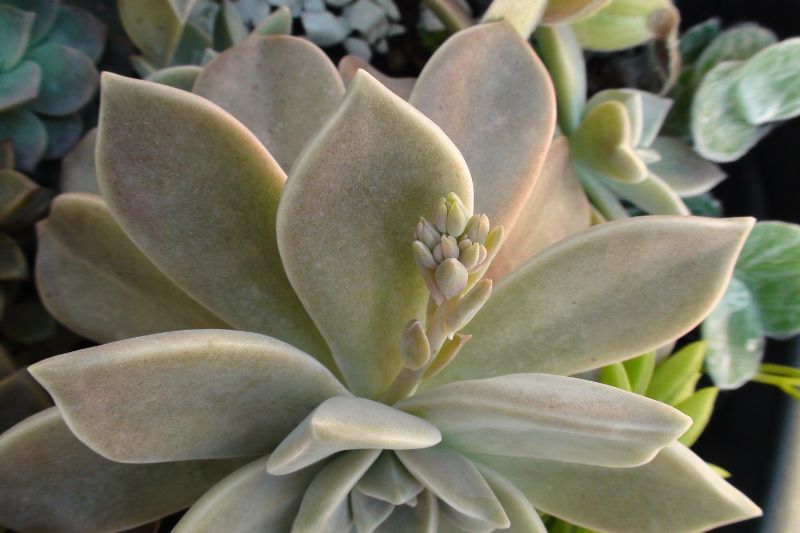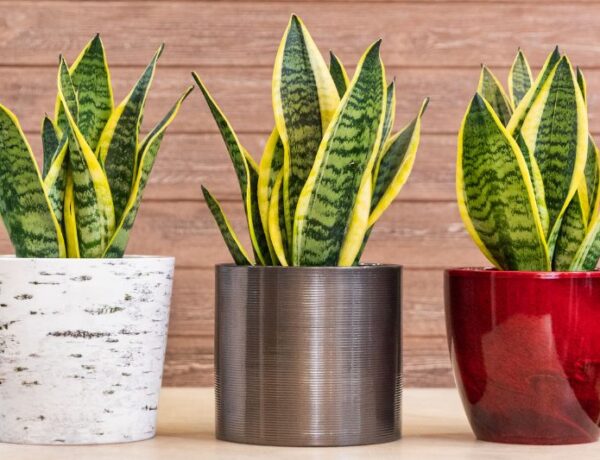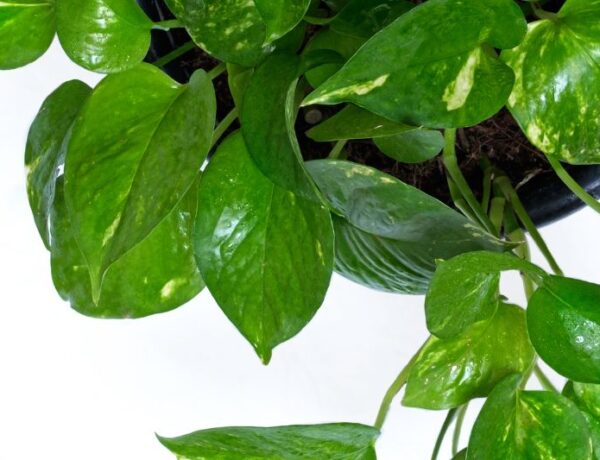Succulents, known for their low-maintenance requirements and fascinating varieties, bring joy to plant enthusiasts all over the world. One of the most exciting events in a succulent’s life is its flowering period.
In this article we’ll delve into everything you need to know about succulent flowers: their life cycle, whether succulents die after flowering, how and when to prune, and more.
Table of Contents
Do Succulents Flower?
Absolutely. Many types of succulents can produce flowers, given the right conditions. Some species bloom regularly, while others may only flower under specific circumstances or at certain times of the year.
Not all succulents flower, though, and some may never flower indoors if they don’t receive enough light or aren’t in an ideal environment.
When and How Often Do Succulents Bloom?

The blooming period of succulents varies widely depending on their species. Some might bloom in the middle of summer, while others may flower in winter or spring. Some succulents, like Sempervivum (commonly known as Hen and Chicks), only bloom once in their lifetime. Others, like many varieties of Echeveria, can bloom annually when well-cared-for.
Indoor succulents might not flower as frequently as their outdoor counterparts due to less than ideal light conditions. However, providing them with a period of “dormancy,” where they’re exposed to cooler temperatures and shorter daylight hours, can help trigger blooming.
Make sure to check out our article on flowering succulent for more info on the species that bloom!
What To Do When Succulents Flower?
When your succulent flowers, it’s a sign of a happy, healthy plant. The most important thing you can do is to continue providing optimal care. Make sure it has plenty of sunlight, the correct amount of water, and the right type of soil.
During the flowering period, your succulent might require slightly more water than usual, but be careful not to overwater. The soil should dry out between watering sessions.
Enjoy this beautiful phase and consider documenting it through photographs. Succulent flowers are often vibrant and eye-catching, adding a splash of color to your green space.
What To Do With a Succulent Flower Stalk?
Flower stalks, or inflorescences, carry the succulent’s flowers. After the flowering period, these stalks will often wither. At this point, you can gently remove them by hand or use a clean, sharp pair of pruning shears. Be sure not to damage the main plant when doing this.
However, some succulent parents prefer to leave the dried stalks on the plant, as they can contribute to an appealing, natural look. It’s really up to personal preference. Just ensure that leaving the stalk doesn’t encourage any rot or pest infestation.
Do Succulents Die After Flowering?
This is a common concern among succulent parents. The answer depends on the type of succulent you have.
Most succulents don’t die after flowering. They continue to grow and may even bloom again. However, there’s a phenomenon known as “monocarpic death” that occurs in some succulents, most notably in the Sempervivum and Agave species.
Monocarpic succulents bloom only once in their lifetime. After producing a spectacular flower display (often called a “death bloom”), the main plant dies. However, these types of succulents typically produce offsets, or “pups,” around the base of the main plant. After the main plant dies, these pups continue to grow and eventually bloom themselves. It’s quite similar to how air plants “die” after flowering.
How To Prune Succulent Flowers?
Pruning succulents is usually straightforward. Once the flower stalks have withered and the flowers have faded, use clean, sharp scissors or pruning shears to cut the stalk off as close to the main plant as possible without causing damage. This helps keep your succulent looking tidy and also directs the plant’s energy back to the main growth.
If your succulent is monocarpic and has finished its blooming cycle, you’ll need to remove the dead rosette. After ensuring that the pups are rooted and established, gently cut or twist off the dead rosette. Be careful not to damage the pups as they’re the future of your plant.
Propagating Succulents From Seeds and Seed Collection
Propagation is a common practice among succulent enthusiasts, and while it’s usually done through leaf cuttings or offsets, growing succulents from seeds is also possible. This method provides a chance to grow a larger number of plants and even rare varieties that may not be readily available.
To collect seeds from your succulents, you’ll need to allow the flowers to fully bloom and then fade. After the flowers have wilted, a seed pod usually forms. Let these pods dry out completely on the plant; they will eventually start to split open, revealing the tiny seeds. Carefully collect these seeds and store them in a dry, cool place until you’re ready to plant.
When planting, use a well-draining soil mix suitable for succulents. Sprinkle the seeds over the soil surface and lightly cover them with a thin layer of sand or soil. Keep the soil slightly moist but not waterlogged, and place the pot in a warm, well-lit area, but not in direct sunlight as this can scorch the delicate seedlings.
Germination times vary among different succulent species, so patience is key here. Some may sprout within a few weeks, while others might take several months. Once the seedlings have grown large enough to handle, usually when they have several sets of true leaves, you can carefully transplant them into individual pots. Remember, they will still be fragile at this stage, so handle with care.
This method does require more care and patience compared to other propagation methods. However, watching your tiny seeds grow into mature, flowering succulents can bring a great sense of accomplishment, adding a new dimension to your succulent growing journey.
Conclusion
Flowering is an exciting phase in the life cycle of a succulent, signaling that the plant is thriving. Knowing how to properly care for your flowering succulents can lead to a more fulfilling plant-growing experience.
With the right care, these fascinating plants can continue to flourish and may reward you with a stunning floral display year after year, or at least once in their lifetime for the monocarpic species.






No Comments